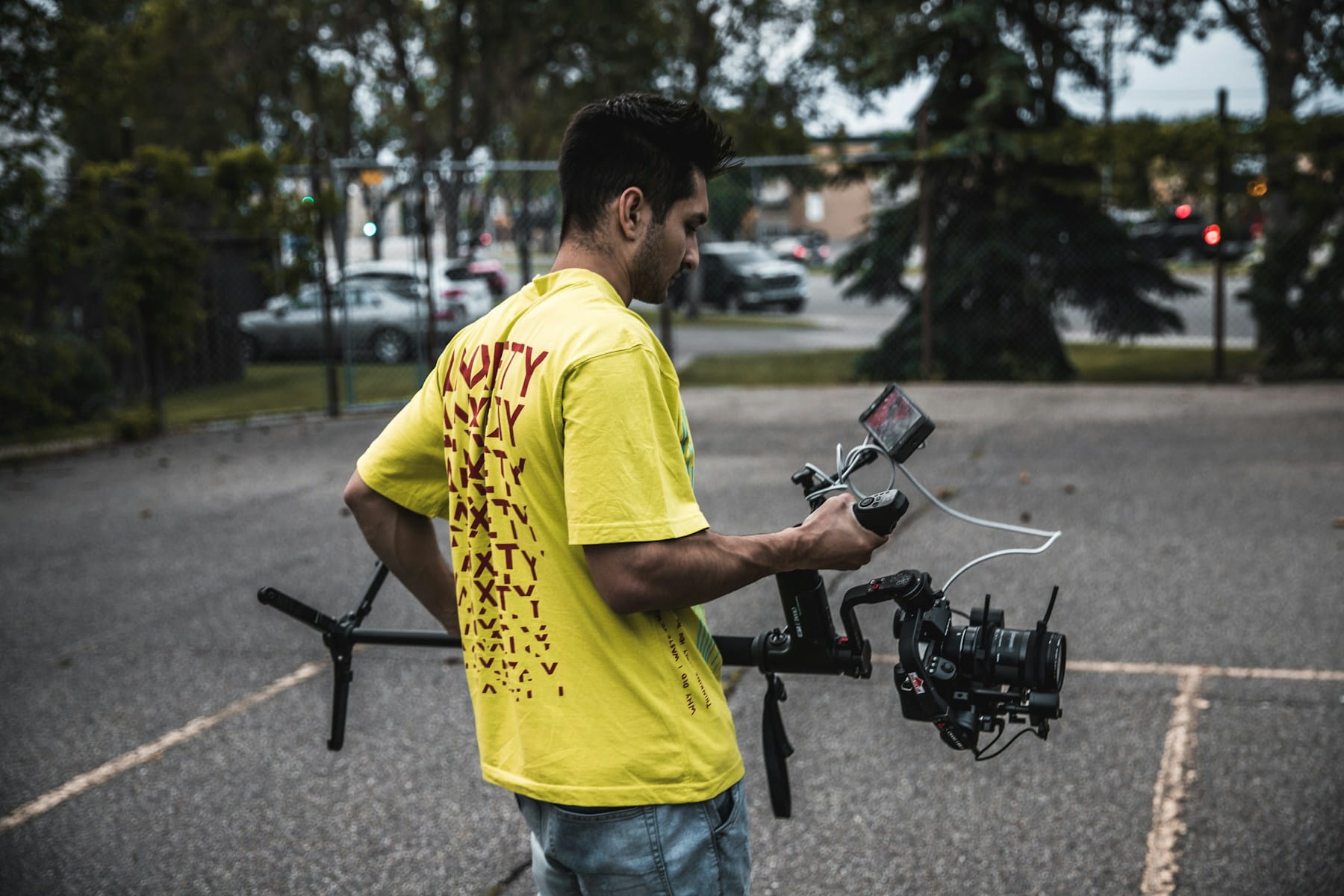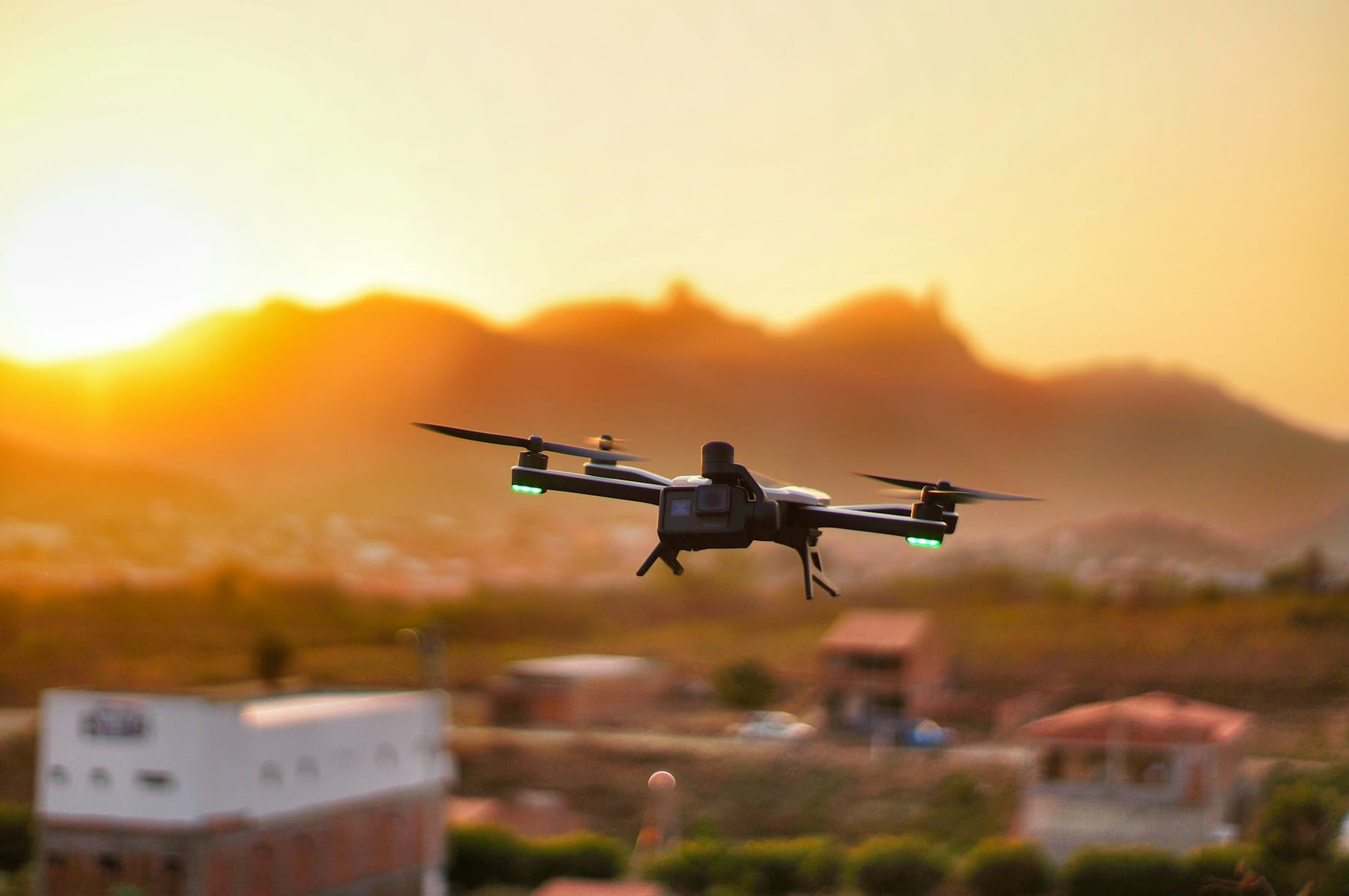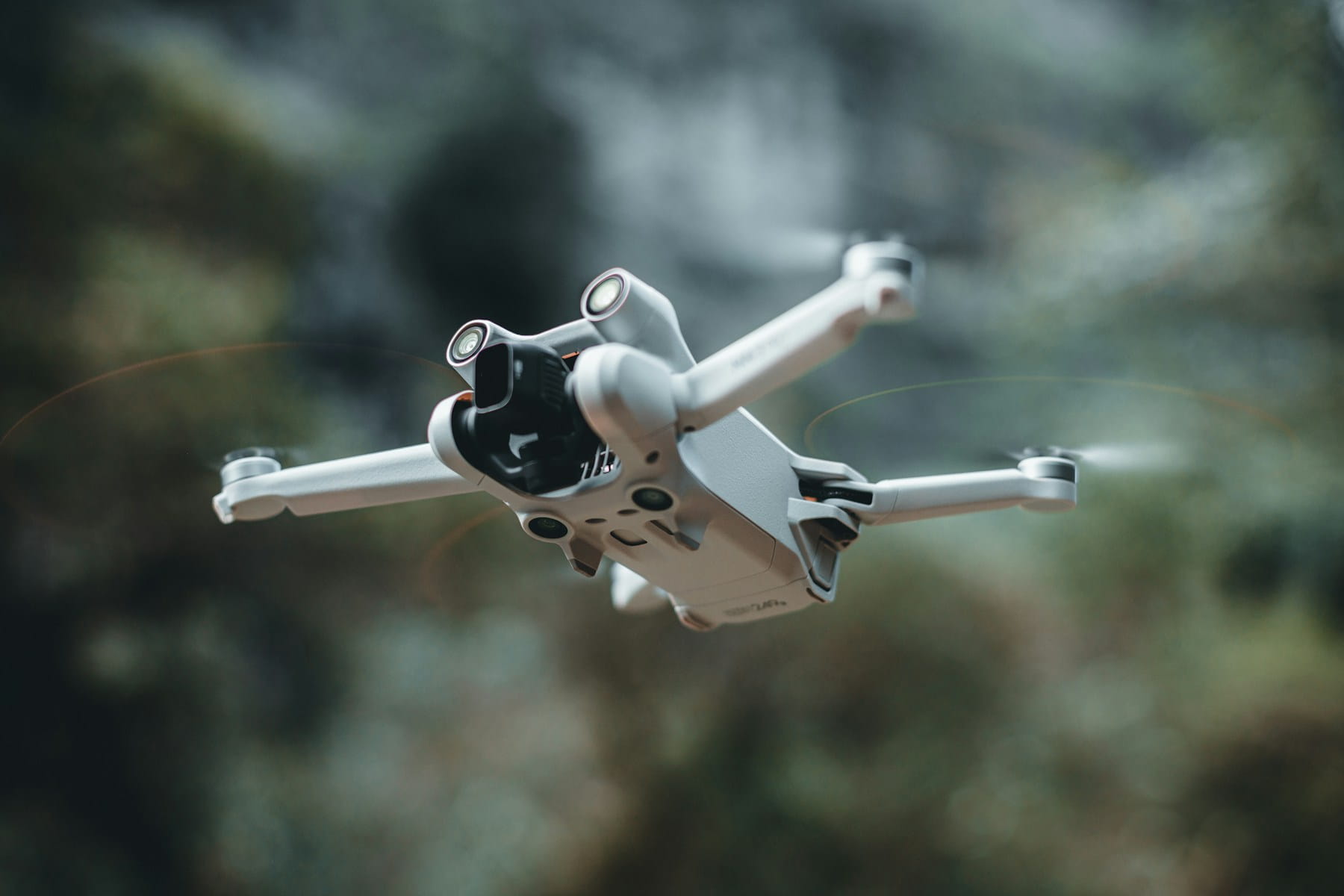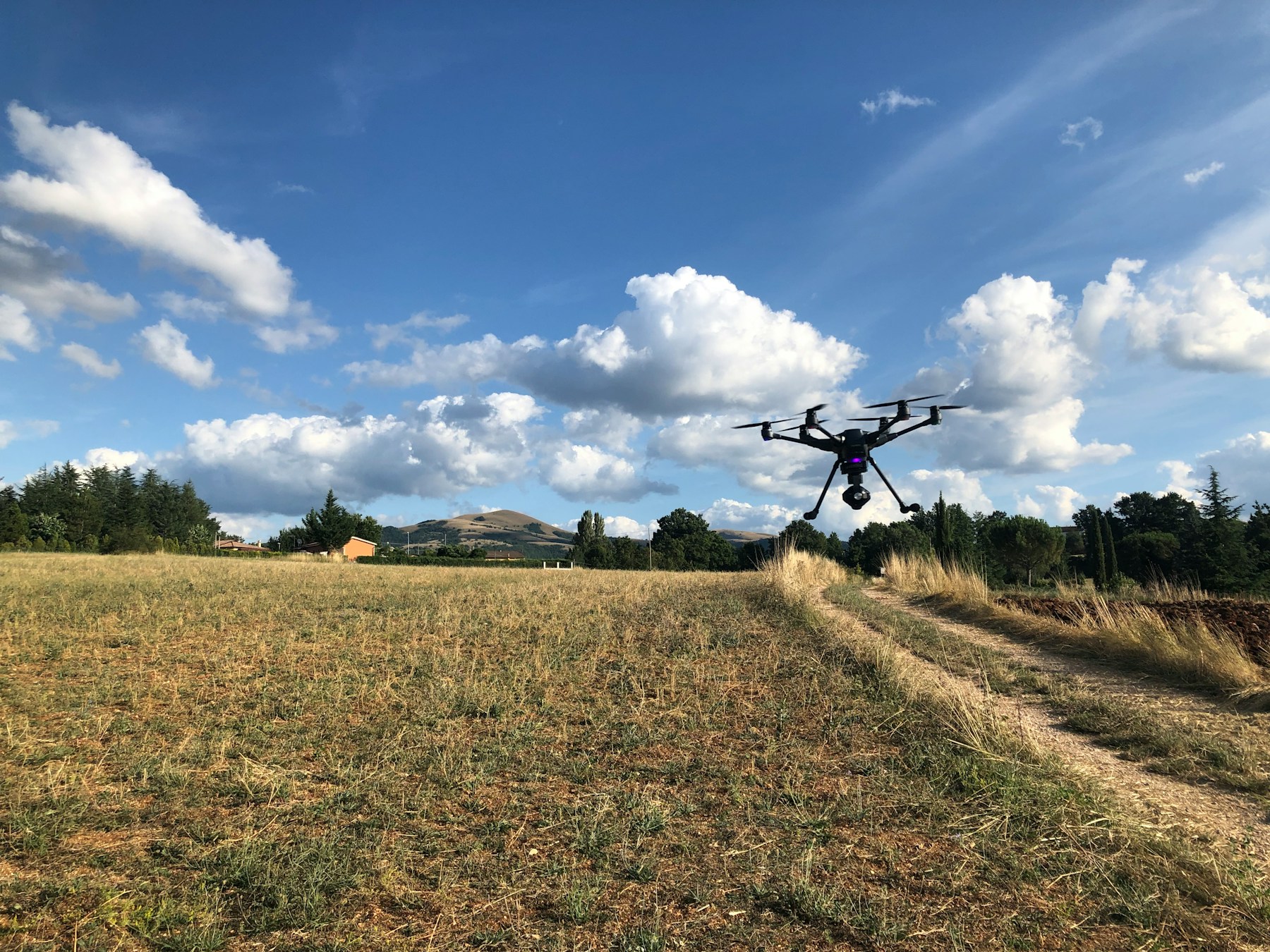What is a Drone Service Business?
A drone service business is a commercial enterprise that provides aerial services using unmanned aircraft systems (UAS) for clients across various industries including real estate, construction, agriculture, and industrial inspection. These businesses require FAA Part 107 certification, appropriate insurance coverage, professional-grade equipment, and systematic operational processes to deliver consistent value through aerial photography, mapping, inspection, monitoring, and specialized data collection services.
Starting a drone service business might sound like a tech entrepreneur's daydream, but it's become a legitimate path to financial independence. The barriers to entry have dropped significantly over the past few years, making this an opportune time for aspiring pilots to launch their own operations.
The drone industry has grown from a hobbyist playground into a multi-billion dollar sector. Professional applications now span everything from real estate photography to industrial inspections, creating diverse revenue streams for business-minded pilots. This growth trajectory shows no signs of slowing down.
But success isn't guaranteed. Building a profitable drone service business requires more than just buying expensive equipment and hoping clients appear. It demands strategic planning, regulatory compliance, and a deep understanding of market dynamics.
Table of contents
- Market opportunity and profitability potential
- Legal requirements and certification
- Business structure decisions
- Equipment and startup costs
- Service offerings and niche selection
- Insurance and risk management
- Marketing and client acquisition
- Operations and scaling
- Common challenges and solutions
- Financial planning and pricing
- Frequently asked questions
- Implementation considerations
- In summary
Market opportunity and profitability potential
The numbers tell a compelling story. The global commercial drone market reached $30 billion in 2024 and is projected to exceed $54 billion by 2030, driven by increasing adoption across multiple sectors. This growth creates substantial opportunities for service providers who position themselves correctly.
Profitability varies significantly based on specialization and market positioning. With profit margins ranging from 50-70% gross and 20-40% net, drone services companies can achieve ROI within 12-18 months. Real estate photographers might charge $200-500 per property shoot, while industrial inspection specialists can command $1,500-5,000 per project. The key lies in matching your capabilities with high-value applications.
Geographic factors play a major role in success potential. Urban markets offer higher client density but increased competition. Rural areas might provide specialized opportunities in agriculture or infrastructure monitoring with less competition but potentially lower overall demand.
Market research becomes crucial here. Understanding local demand patterns, competitor pricing, and client pain points helps identify the most promising opportunities. Some entrepreneurs focus on volume-based services like real estate, while others pursue specialized niches requiring advanced equipment and training.
The subscription model has gained traction in certain sectors. Regular monitoring contracts for construction sites, agricultural fields, or industrial facilities provide predictable recurring revenue. These arrangements often prove more profitable than one-off projects.
Legal requirements and certification
Every commercial drone operation starts with Part 107 certification. This FAA requirement covers airspace regulations, safety procedures, and operational limitations. The exam costs $175 and requires a 70% passing score. As of 2025, the FAA reports over 460,000 certificated remote pilots, reflecting the growing commercial drone industry.
Preparation typically takes 15-20 hours of focused study. The test covers weather patterns, airspace classifications, aircraft performance, and emergency procedures. Online courses and practice exams help candidates prepare effectively.
Registration requirements apply to aircraft weighing more than 0.55 pounds. The FAA's online portal makes registration straightforward, costing $5 per aircraft for three-year terms. Commercial operators need Part 107 registration rather than recreational certificates.
Operational restrictions under Part 107 include:
- Daylight operations only (without waiver)
- Visual line of sight maintenance
- Maximum altitude of 400 feet AGL
- Maximum speed of 100 mph
- No operations over people (without waiver)
- Prohibited flights from moving vehicles
Waivers allow operations outside standard restrictions but require advance planning. Night operations, flights over people, and beyond visual line of sight operations all need specific FAA approvals. The waiver process typically takes 90 days or longer.
State and local regulations add another compliance layer. Some municipalities restrict drone operations in certain areas or require additional permits. Privacy laws also affect how and where commercial operators can fly.
Continuing education keeps pilots current with changing regulations. Part 107 requires recurrent training every two years, available free through the FAA's online system. Staying informed about regulatory changes protects against violations that could ground operations.
Business structure decisions
Choosing the right business structure affects liability protection, tax obligations, and operational flexibility. Most drone service businesses benefit from formal structures that separate personal and business assets.
Limited Liability Companies (LLCs) offer an attractive balance of protection and simplicity. They shield personal assets from business liabilities while providing tax flexibility. LLCs also enhance credibility with larger clients who prefer working with established entities.
Setting up an LLC involves several steps:
- Choose a unique business name
- File Articles of Organization with the state
- Obtain an Employer Identification Number (EIN)
- Open a business bank account
- Create an operating agreement
Sole proprietorships require less paperwork but offer no liability protection. Personal assets remain vulnerable to business-related claims, making this structure risky for drone operations where accidents can cause significant damage.
Corporations provide maximum liability protection and potential tax advantages but require more complex management. The additional overhead makes sense primarily for larger operations or those planning rapid expansion.
Professional consultation helps navigate these decisions. Business attorneys and accountants can evaluate specific circumstances and recommend appropriate structures. The initial investment in professional advice often pays dividends through better protection and tax efficiency.
Equipment and startup costs
Equipment costs vary dramatically based on intended applications and quality requirements. Basic professional setups start around $2,000-3,000, while advanced inspection or mapping rigs can exceed $50,000.
Entry-level options like the DJI Mini series provide 4K video capabilities suitable for basic real estate work. Mid-range platforms such as the Mavic or Air series offer enhanced flight time and camera quality for more demanding applications.
Professional-grade equipment includes thermal imaging cameras, LiDAR sensors, and mapping-specific platforms. These specialized tools command premium pricing but enable higher-value services. Return on investment calculations should factor in both equipment costs and revenue potential.
Beyond aircraft, operational expenses include:
- Spare batteries and charging systems
- Memory cards and storage solutions
- Transport cases and vehicle modifications
- Computing hardware for data processing
- Software licenses for editing and analysis
Budget planning should account for equipment replacement and upgrades. Technology advances rapidly, and staying competitive often requires periodic equipment updates. Setting aside 15-20% of revenue for equipment maintenance and replacement helps maintain operational readiness.
Financing options include equipment loans, leasing arrangements, and gradual expansion strategies. Starting with basic equipment and reinvesting profits into better gear allows for organic growth without excessive initial debt.
Service offerings and niche selection
Successful drone businesses often specialize in specific sectors rather than trying to serve all markets. Specialization allows for deeper expertise, better equipment optimization, and premium pricing.
Real estate photography remains a popular entry point due to relatively low barriers and steady demand. However, market saturation in many areas has compressed pricing. Success requires efficient operations and strong client relationships.
Construction and infrastructure services offer higher margins but require more technical expertise. Regular progress monitoring, volumetric calculations, and inspection services create ongoing revenue opportunities. These applications often demand specialized software and analysis capabilities.
Agricultural services present significant opportunities in rural markets. Crop monitoring, yield estimation, and precision application support help farmers optimize operations. This sector requires understanding of agricultural practices and specialized sensor packages.
Industrial inspection services command premium rates but involve higher risks and regulatory requirements. Power line surveys, cell tower inspections, and facility monitoring require advanced equipment and specialized training. Insurance requirements also increase for these applications.
Emergency services and public safety represent emerging markets. Search and rescue support, disaster assessment, and traffic monitoring create opportunities for specialized operators. These applications often involve government contracts with specific procurement processes.
Emerging applications continue to create new opportunities. Environmental monitoring, wildlife surveys, and scientific research projects offer specialized niches for technically capable operators. Staying informed about industry trends helps identify developing markets.
Insurance and risk management
Insurance forms the backbone of risk management for drone service businesses. Accidents happen even to experienced pilots, and adequate coverage protects against potentially devastating financial losses.
Liability insurance covers third-party property damage and personal injury claims. Most commercial operations require minimum coverage of $1 million, though higher limits provide better protection. Annual premiums typically range from $1,000-5,000 depending on coverage limits and risk factors.
Hull insurance protects the aircraft itself against damage or theft. This coverage becomes particularly important for expensive professional equipment. Premiums depend on aircraft value, pilot experience, and operational risk factors.
On-demand insurance options like Verifly offer flexible coverage for occasional operators. These platforms allow pilots to purchase short-term policies for specific flights or projects, reducing costs for infrequent commercial operations.
Risk mitigation goes beyond insurance coverage. Proper maintenance procedures, preflight inspections, and operational protocols reduce accident likelihood. Many insurance providers offer premium discounts for operators who complete additional training or implement formal safety management systems.
Weather considerations play a major role in risk management. Operating in adverse conditions increases accident risk and potential liability exposure. Establishing clear weather minimums and sticking to them protects both equipment and business interests.
Marketing and client acquisition
Building a client base requires strategic marketing across multiple channels. Successful operators typically combine online presence with direct networking and relationship building.
Professional websites serve as the foundation for online marketing efforts. Portfolio galleries, service descriptions, and client testimonials establish credibility with potential customers. Search engine optimization helps prospects find services when searching for drone providers.
Social media platforms offer powerful marketing tools for visual services. Instagram and YouTube showcase work quality while LinkedIn facilitates B2B relationship building. Regular content creation demonstrates expertise and keeps services visible to potential clients.
Local networking often produces the most valuable connections. Real estate associations, construction industry groups, and business chambers provide access to potential clients. Building relationships takes time but often results in steady referral streams.
Direct outreach can be effective when properly targeted. Identifying potential clients and reaching out with relevant case studies or service proposals demonstrates proactive business development. Following up consistently without being pushy builds recognition and trust.
Referral programs incentivize existing clients to recommend services to their networks. Offering discounts or finder's fees for successful referrals can significantly expand the client base. Happy clients often become the most effective marketing channel.
Competitive pricing analysis helps position services appropriately in the market. Understanding what competitors charge allows for strategic pricing that balances profitability with market competitiveness.
Operations and scaling
Efficient operations management becomes crucial as drone businesses grow beyond single-pilot operations. Standardized procedures, proper record keeping, and systematic approaches enable consistent service delivery.
Flight planning software streamlines mission preparation and ensures regulatory compliance. Automated flight planning reduces preparation time while improving safety through systematic approach procedures. Integration with weather services and airspace databases helps avoid operational conflicts.
Record keeping requirements under Part 107 mandate detailed flight logs, maintenance records, and pilot currency tracking. Digital solutions simplify compliance while providing operational insights. Proper documentation also supports insurance claims and regulatory inquiries.
Quality control procedures ensure consistent service delivery across multiple projects and pilots. Standardized checklists, post-flight reviews, and client feedback systems help maintain service standards as operations expand.
Scaling strategies might include hiring additional certified pilots, expanding service offerings, or pursuing strategic partnerships. Each approach involves different risks and capital requirements. Geographic expansion can increase market reach but requires understanding of local regulations and competition.
Technology integration becomes increasingly important as operations grow. Customer relationship management systems, project tracking software, and automated billing processes improve efficiency and reduce administrative overhead.
Subcontracting arrangements with other pilots can help handle peak demand periods without permanent staff expansion. These relationships require clear agreements about quality standards, pricing, and client interactions.
Common challenges and solutions
New drone service businesses face predictable challenges that can derail operations if not properly addressed. Understanding these obstacles and preparing solutions improves success probability.
Weather dependencies affect all outdoor drone operations. Seasonal variations, regional weather patterns, and climate considerations impact scheduling and revenue consistency. Diversifying service offerings across different weather requirements helps maintain operational continuity.
Equipment failures can ground operations and disappoint clients. Maintaining backup aircraft, spare parts inventory, and rapid repair capabilities minimizes service disruptions. Preventive maintenance schedules reduce unexpected failures.
Regulatory changes create ongoing compliance challenges. Staying current with FAA updates, local ordinance changes, and industry developments requires continuous attention. Professional associations and industry publications help operators stay informed.
Client education often becomes necessary as drone services remain relatively new in many markets. Explaining capabilities, limitations, and value propositions helps set appropriate expectations and justify pricing.
Seasonal demand fluctuations affect many drone applications. Construction activity peaks during warm months while holiday real estate markets create year-end rushes. Financial planning should account for these variations.
Competition increases as barriers to entry remain relatively low. Differentiation through specialization, superior service quality, or technological capabilities helps maintain competitive advantages.
Financial planning and pricing
Sustainable pricing strategies balance market competitiveness with profitability requirements. Understanding all cost components helps establish minimum pricing thresholds while identifying opportunities for premium positioning.
Direct costs include pilot time, equipment depreciation, fuel or battery costs, and insurance allocations. Indirect costs encompass business registration, continuing education, marketing expenses, and administrative overhead. Accurate cost accounting prevents unprofitable pricing decisions.
Pricing models vary across different service categories:
| Service Type | Typical Pricing Model | Price Range |
|---|---|---|
| Real Estate Photography | Per property or hourly | $150-500 per shoot |
| Construction Progress | Monthly retainer | $500-2,000 per month |
| Industrial Inspection | Per asset or daily rate | $1,000-5,000 per project |
| Agricultural Surveys | Per acre or seasonal | $5-15 per acre |
| Mapping Services | Per area with deliverables | $2,000-10,000+ per project |
Value-based pricing often proves more profitable than cost-plus approaches. Understanding client benefits and pain points allows for pricing based on delivered value rather than just operational costs. Emergency services, time-sensitive projects, and specialized applications typically support premium pricing.
Payment terms affect cash flow management. Net 30 terms are common in commercial markets but can strain small businesses. Requiring partial payment upfront or offering early payment discounts helps manage cash flow challenges.
Financial projections should model different growth scenarios and market conditions. Conservative estimates help avoid overextension while optimistic projections identify growth potential. Regular financial reviews help track performance against projections and adjust strategies accordingly.
Frequently asked questions
How much does it cost to start a drone service business?
Initial startup costs typically range from $3,000-$15,000 depending on equipment quality and business structure. This includes a professional-grade drone ($2,000-$10,000), FAA Part 107 certification ($175 plus study materials), liability insurance ($1,000-$5,000 annually), business registration, and basic marketing materials. Many successful operators start with mid-range equipment and reinvest profits into better gear as the business grows. Monthly operating expenses average $500-$2,000 for insurance, equipment maintenance, software subscriptions, and marketing.
What certifications do I need to operate a commercial drone business?
Commercial drone operations require FAA Part 107 Remote Pilot certification, which involves passing a written exam covering airspace regulations, weather patterns, and safe operating practices. The certification costs $175 and requires a 70% passing score. Additional waivers may be needed for night operations, flights over people, or beyond visual line of sight operations. Some specialized services like construction inspections or agricultural applications may benefit from industry-specific training certifications to demonstrate expertise to clients.
What are the most profitable drone service niches?
The most profitable niches typically include industrial inspection services ($1,500-$5,000 per project), construction progress monitoring ($500-$2,000 monthly retainers), and specialized mapping services ($2,000-$10,000+ per project). While real estate photography offers steady demand, market saturation has compressed pricing in many areas ($150-500 per shoot). Agricultural services provide seasonal opportunities with per-acre pricing models, while emergency services and public safety represent emerging high-value markets requiring specialized capabilities.
How long does it take to become profitable with a drone service business?
Most drone service businesses achieve profitability within 6-12 months with proper planning and execution. Timeline varies based on initial capital investment, marketing effectiveness, and local market conditions. Operators who start part-time while maintaining other income can test markets and build client bases with lower financial pressure. Full-time operators typically need 3-6 months to establish consistent client flow. Success factors include effective operations management, systematic flight planning, and strategic pricing that balances competitiveness with profitability requirements.
Implementation considerations
Aspiring drone service entrepreneurs should begin with comprehensive market research before investing heavily in equipment. Analyze local competition, identify underserved niches, and validate demand through direct outreach to potential clients. This groundwork prevents expensive mistakes and ensures initial investments align with actual market opportunities.
Obtaining FAA Part 107 certification represents the first concrete step toward commercial operations. Dedicate 15-20 hours to focused study using online courses and practice exams. Schedule the test strategically to align with business launch timelines, as certification remains valid for two years with recurrent training requirements.
Equipment selection should prioritize versatility and reliability over impressive specifications. Mid-range platforms like the DJI Mavic or Air series offer professional capabilities suitable for multiple service categories, allowing operators to test different markets before specializing. Invest in quality batteries, backup equipment, and proper storage solutions to maintain operational reliability.
Business infrastructure including legal structure, insurance coverage, and financial systems should be established before marketing services. Consult with attorneys and accountants to select appropriate business structures and ensure compliance with local regulations. Professional liability insurance protects against potentially devastating financial losses from accidents or client claims.
In summary
Building a profitable drone service business combines aviation expertise with strategic business planning and systematic execution. The commercial drone market continues expanding across real estate, construction, agriculture, and industrial sectors, creating substantial opportunities for well-positioned service providers.
Success requires more than technical flying skills—it demands understanding of regulatory compliance, market positioning, operational efficiency, and client value creation. Entrepreneurs who approach drone services as legitimate businesses rather than flying hobbies position themselves for long-term profitability and growth.
The path from recreational pilot to commercial operator involves obtaining Part 107 certification, selecting appropriate equipment, establishing business infrastructure, and developing systematic marketing and operations processes. Those who invest time in planning, maintain focus on client needs, and continuously refine their operations typically achieve profitability within their first year of focused effort.
Launch your drone service business with confidence
DroneBundle provides comprehensive operations management tools specifically designed for commercial drone service providers. The platform streamlines flight planning, maintains regulatory compliance documentation, and coordinates multi-client operations as your business grows.
Track pilot certifications, manage equipment maintenance schedules, maintain detailed flight records, and ensure documentation meets FAA requirements. DroneBundle's integrated approach eliminates administrative overhead, allowing entrepreneurs to focus on service delivery and business development rather than compliance paperwork.
Start your free trial today — no credit card required.
Or book a demo to see how DroneBundle simplifies drone service operations with integrated compliance tracking and client management.



